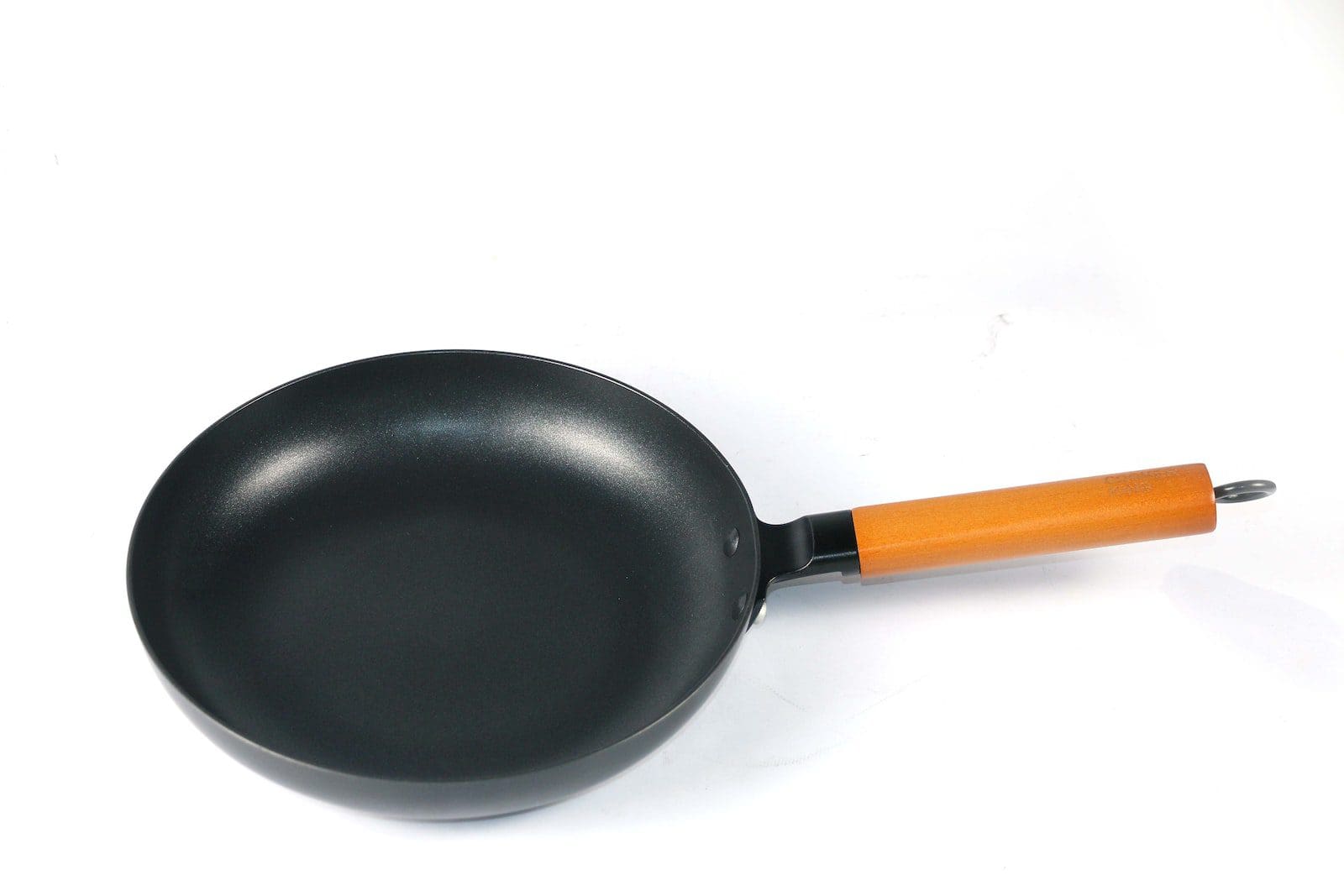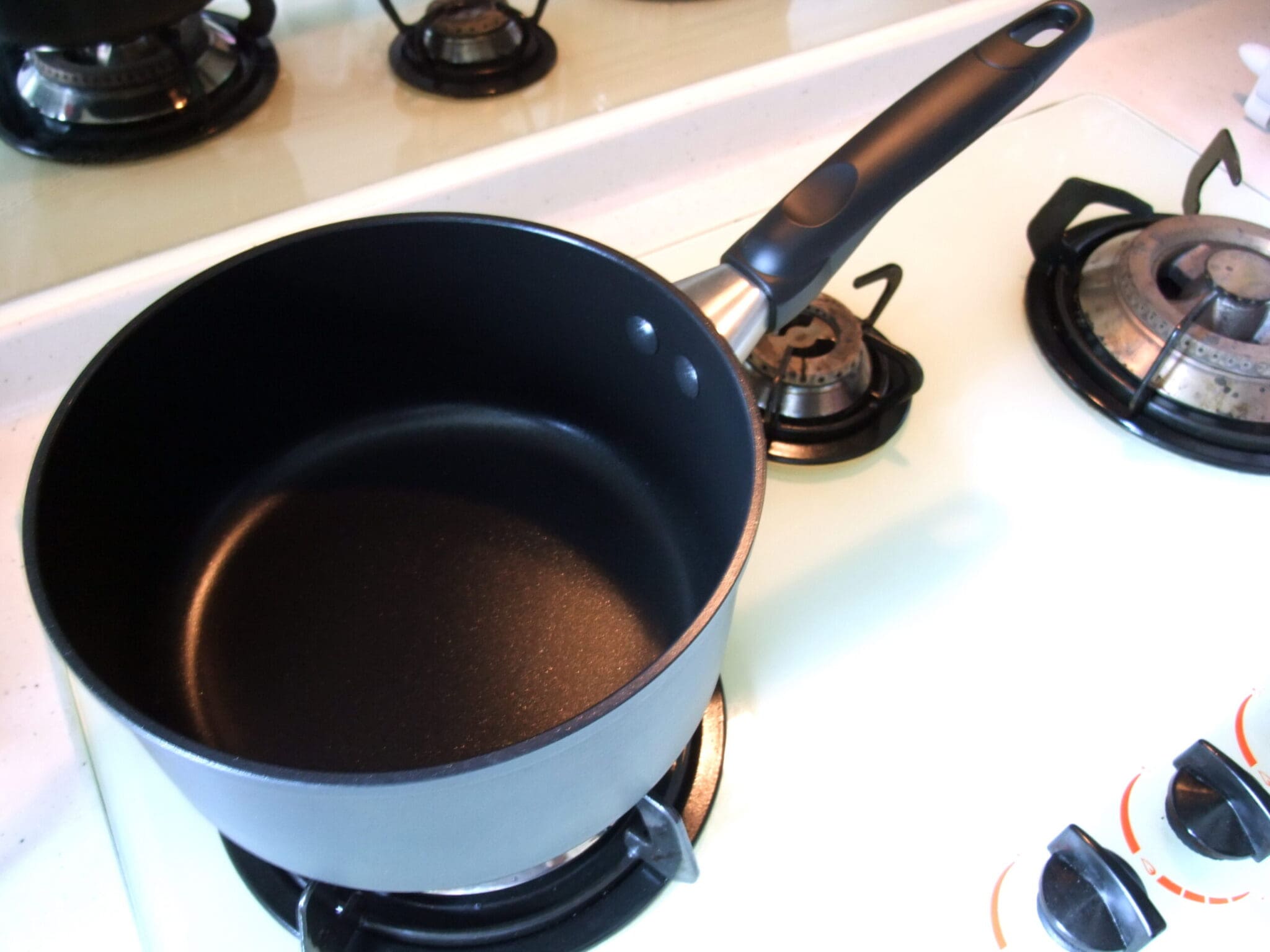There are a plethora of choices available for kitchen appliances to consumers today. In such a scenario, it becomes difficult to make the right choice.
The frying pan and saucepan are two cooking vessels commonly used today. While they may seem to serve the same purpose, a frying pan and a saucepan have considerable differences in their appearance and functions.
Key Takeaways
- A frying pan is a shallow pan used for food, whereas a saucepan is a deep pan used for cooking sauces and liquids.
- Frying pans have sloping sides and a flat bottom, whereas saucepans have straight sides and long handles.
- Frying pans are best for cooking foods that need to be fried or sautéed, whereas saucepans are best for cooking soups, stews, and sauces.
Frying Pan vs Saucepan
A frying pan, a skillet, is a flat-bottomed pan with slightly sloping sides. Frying pans are used for cooking foods that require high heat. A saucepan is a deep, round pot with a long handle and a lid. Saucepans are used for cooking foods that require a liquid, such as soups, stews, sauces, or boiling pasta.

A frying pan is a cooking vessel with a broad base that provides enough surface area for maximum frying. A frying pan has slanted sides.
The fundamental merits of a frying pan are its versatility and better flavour of cooking. A frying pan allows individuals to cook any food item with il in it.
However, it may be unfit for making sauces and cooking other liquids.
A saucepan is a cooking vessel that has raised sides. They are deeper as compared to other cooking utensils.
A saucepan comes with a lid. Although they may have a handle, it is not as long as the one with a frying pan.
An advantage of saucepan is that it is available in a wide variety of sizes, and individuals can buy the size that fits their needs.
Comparison Table
| Parameters of Comparison | Frying Pan | Saucepan |
|---|---|---|
| Purpose | A saucepan is more profound as compared to a frying pan. | A saucepan is ideal for making sauces. |
| Liquid | A frying pan is designed to get rid of the liquid. | A saucepan is designed to retain the liquid. |
| Depth | A frying pan is shallower as compared to a saucepan. | The demerits of a saucepan are limited volume and difficulty in cleaning. |
| Merits | The merits of a frying pan are better flavour and higher cooking speed. | The merits of a saucepan are better heat distribution and the availability of different sizes. |
| Demerits | The demerits of a frying pan are the necessity of oil and the risk of burning the food. | The demerits of a saucepan are limited volume and the difficulty in cleaning. |
What is a Frying Pan?
The frying pan is a flat-bottomed Pan that serves several valuable purposes. The frying pan is used for frying, searing and grounding foods.
A typical frying pan is 20 to 30 cm in diameter.
Another name for a frying pan is a Skillet or Frypan. Frying pans with a large size have a small grab handle opposite the main hold.
The primary purpose of a frying pan is to be too shallow to fry food.
The word pan originates from the Old English word Panna. There are several materials used in the manufacture of frying pans. Initially, cast iron, copper, and carbon steel were used to make frying pans.
However, today’s raw materials include stainless steel, aluminium or anodized aluminium, and clad stainless steel with an aluminium or copper core.
The origin of frying pans dates back to their use in Mesopotamia. They were also in everyday use in Greece and Rome.
Two prominent variations among frying pans are the non-stick and electric frying pan. Non-stick frying pans are made using a particular coat of Teflon.
However, frying pans with such a coating may give off toxic fumes.
An electric frying pan incorporates an electric heating element into the frying pan itself. Such a frying pan functions independently and eliminates the need for a cooking stove.
The electric frying pan has become a popular kitchen appliance nowadays. An added advantage of frying pans is that they cook faster than other pans.

What is a Saucepan?
The saucepan is a deep cooking vessel with a handle and, usually, a lid. It serves the purposes of boiling, stewing, and making sauces.
A saucepan is an ideal cooking vessel for liquids.
A saucepan has high sides and straight edges. It has a small surface area.
A saucepan is used on a stovetop. Although several size options are available, the most commonly available ones are 2-3 quarts.
A saucepan is bought for its high liquid-carrying capacity. The height of the saucepan also prevents the liquid from spilling away.
A saucepan, thus, avoids the potential spillage that may occur in a frying pan. However, the limited size of the saucepan makes them unfit for making stocks or large quantities of things.
An everyday saucepan use is to boil water for a small serving of pasta. It is ideal for cooking mashed potatoes, lentils, or risotto. Another added advantage of the saucepan is that it is oven safe.
With the lid, a saucepan can serve the function of a Dutch oven.
Some drawbacks to a saucepan cannot be ignored. Firstly, a saucepan has a limited size.
This, in turn, limits the amount of food that can be prepared in the vessel. Secondly, the size of the saucepan calls for the constant stirring of the food item to prevent burning.
Thirdly, a saucepan may be challenging to clean due to its shape.

Main Differences Between Frying Pan and Saucepan
- A frying pan is shallower as compared to a saucepan.
- Frying pans are ideal for cooking small food items and breakfasts such as bacon and eggs. On the other hand, a saucepan is ideal for making sauces.
- The merits of a frying pan are better flavour and higher cooking speed. In contrast, the merits of a saucepan are better heat distribution and the availability of different sizes.
- The demerits of a frying pan are the necessity of oil and the risk of burning the food. On the other hand, the demerits of a saucepan are limited volume and difficulty in cleaning.
- While a frying pan is designed to get rid of the liquid, a saucepan is designed to retain the liquid.

Last update on 2025-07-31 / Affiliate links / Images from Amazon Product Advertising API






